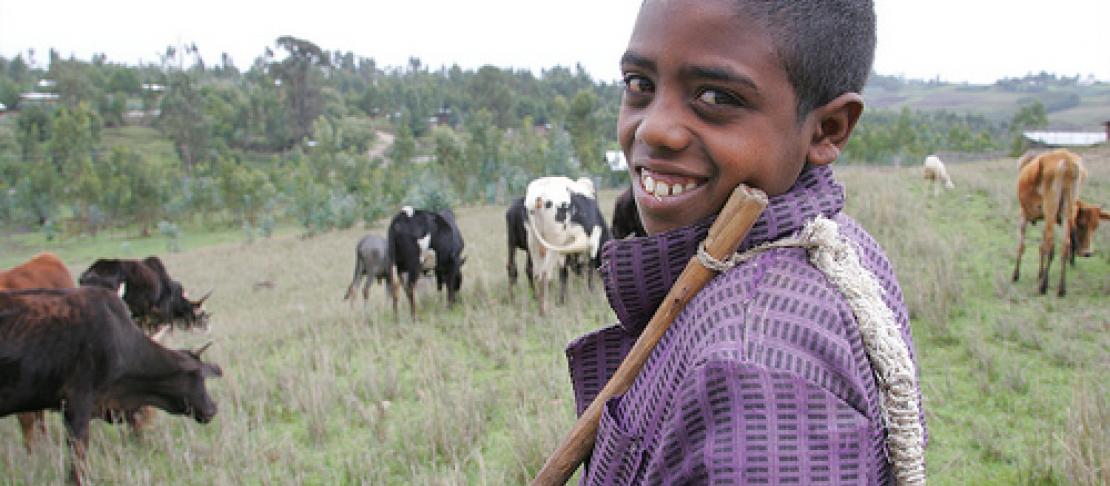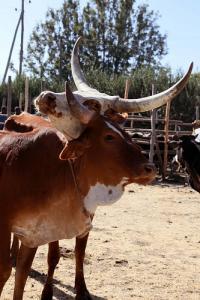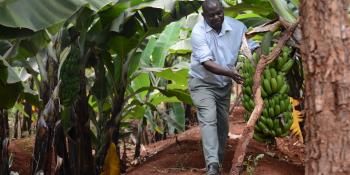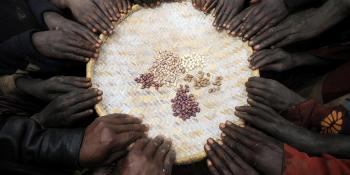Rangeland enclosures could help pastoralists cope with climate variability

Livestock is the mainstay of livelihood for the Borana pastoralists in southern Ethiopia. Recurrent cycles of drought are a major factor influencing production systems and livelihoods. This coupled with livestock disease, lack of market and low economic development pose major threats to the Borana pastoralist's livelihoods, who make their living mainly from keeping cattle, shoats and camels.
To cope with climate variability, the Borana community of southern Ethiopia are undertaking improved range management practices such as establishment of fenced rangeland enclosures.
This works as a feed security strategy for the core breeding stock mainly calves to ensure continuity and sustainability of pastoralism. In some situations they have made shifts in their livelihood patterns and production practices and even engaged more in crop cultivation to complement their income from livestock. They have also introduced new range management practices such as hay making and large enclosures to stock fodder for use during the dry season. 
Rangleland enclosures take the center stage in pilot study
The CGIAR Research Program on Climate Change, Agriculture and Food Security Program (CCAFS) with Managing Risks for Improved Livelihoods (MARIL) implemented a Participatory Action Research (PAR) pilot study last year to identify and take inventory of rangeland enclosures in Ethiopia. These involved documentation of their status, utilization, benefits and their implications on building herders climate change adaptation capacities.
Findings revealed rangeland enclosures contain highly nutritious and palatable grass species, as well as shrubs and trees which fix nitrogen, produce pods (fruit) and provide good shade. In the study area, the enclosures were located in close proximity to villages and water points to minimize the walking distance for calves and lactating cows.
In a follow up quantitative study done to characterize the enclosures, it was verified that high quality grass species such as Chrysopongon aucheri, Heteropogon contortus, Chloris roxburghiana, Cynodon dactylon, Eragrotis species, Panicum maximum, Themeda triandra, Cenchrus ciliaris are dominant. Acacia tortolis is the dominating tree in all the enclosures.
Pastoralists take the lead
During the study, the targeted communities took a lead in identification of their needs for capacity building and participated actively in the implementation, monitoring and evaluation of the project.
Participatory monitoring and evaluation methods were used to capture perspectives of the beneficiaries, key project facilitators and other partners, to see results and effects of the program and to document lessons learned. Being semi-privately owned by a defined group of herders who live in the same location, the enclosures are managed by a committee of knowledgeable and reputable elders using oral bylaws.
There is a grazing calendar and categories of livestock which are allowed to have access to the enclosures and this depends on the available biomass and expectation of the rain in the upcoming season.
In general, enclosures are open for grazing during the peak dry period and closed just before it starts to rain. Priority is given to calves followed by lactating cows. I f there is large biomass left in the enclosures when the rain season approaches, then the bulls meant for fattening and marketing are allowed in.
Learn more about the people living in Borana and how the manage climatic changes:
- Household Basline survey from Borana, Ethiopia (PDF): Investigating if, and how, farmers and pastoralists are adapting to climate variability.
- How are Ethiopian pastoralists perceiving current climate trends? Blog story illustrating a Working Paper, looking at how pastoralists in the area are perceiving climate change.
This story was written by Catherine Mungai and Tabitha Muchaba, both part of CCAFS East Africa regional program team. Follow East Africa on Twitter for the latest updates: @Cgiarclimate_ea


